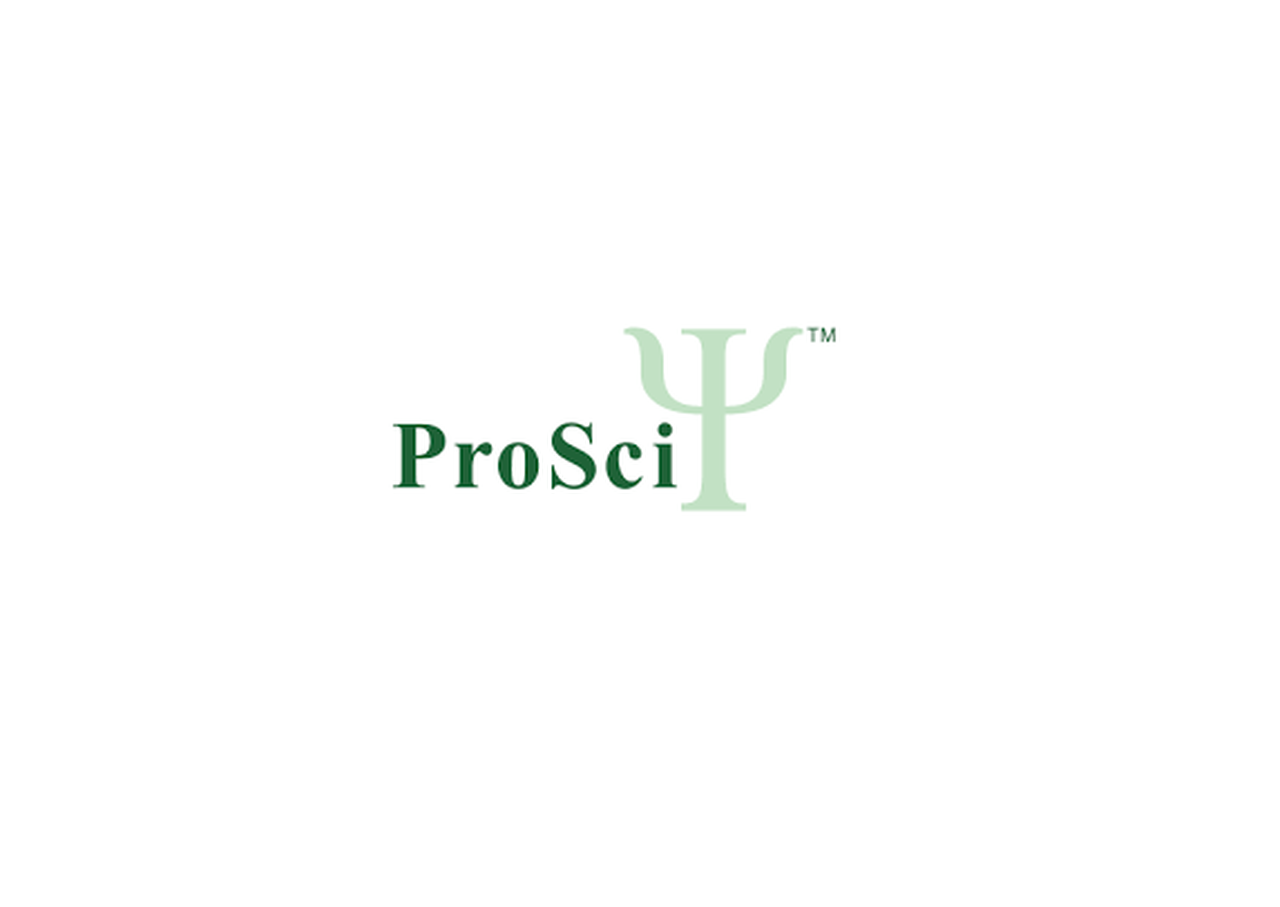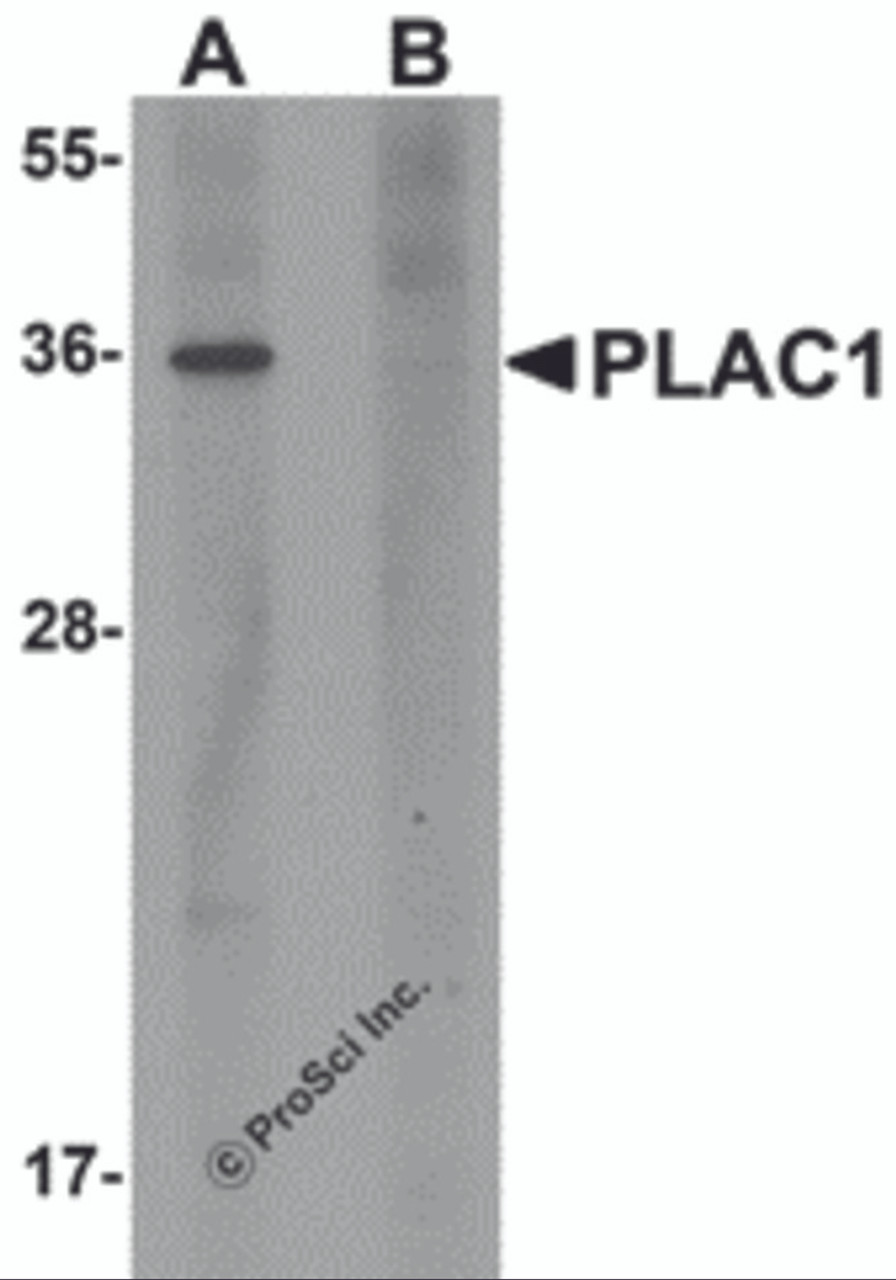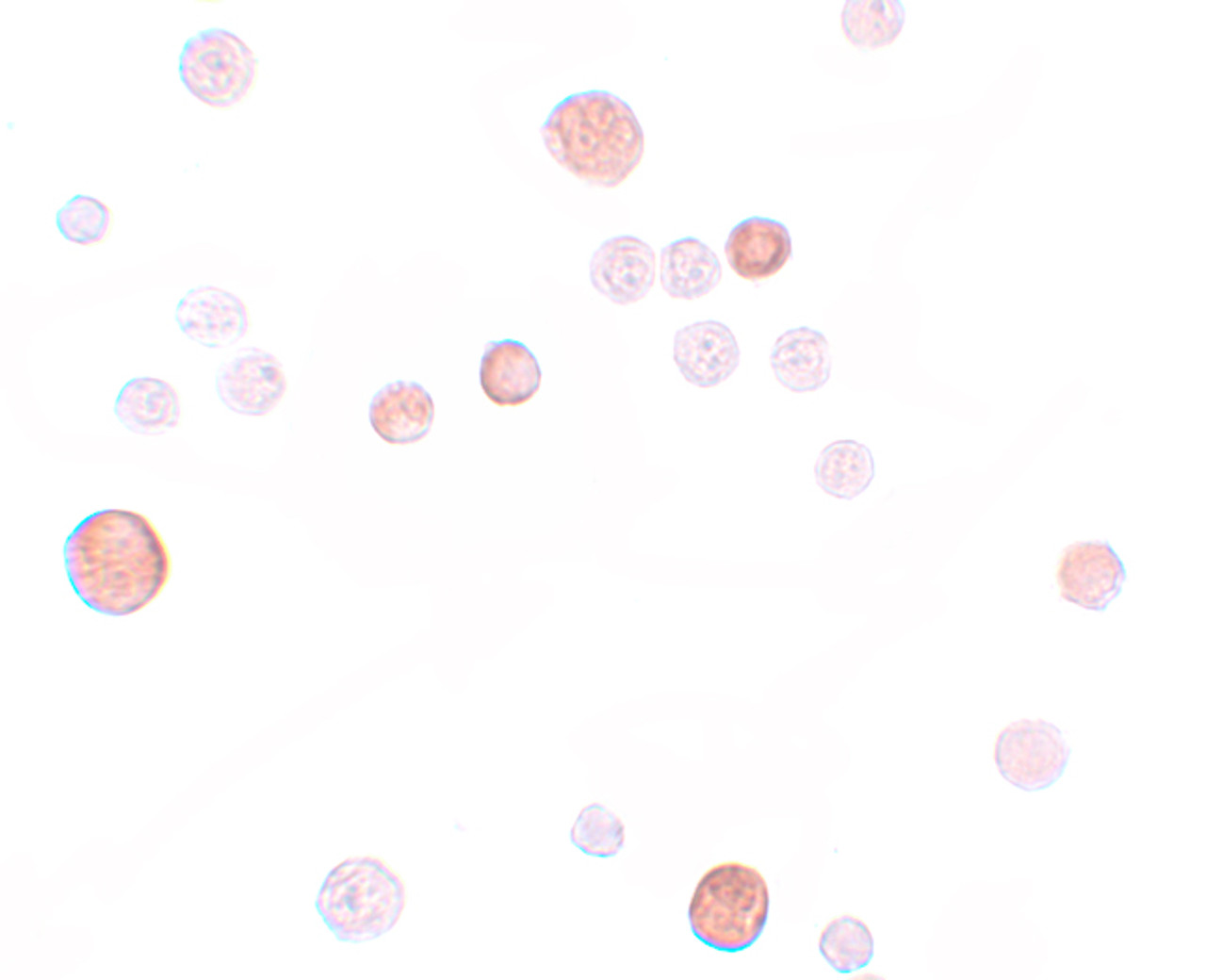Product Description
PLAC1 Antibody | 6015 | ProSci
Host: Rabbit
Reactivity: Human
Homology: N/A
Immunogen: PLAC1 antibody was raised against a 15 amino acid synthetic peptide near the carboxy terminus of human PLAC1.
The immunogen is located within amino acids 130 - 180 of PLAC1.
Research Area: Cancer, Cell Cycle
Tested Application: E, WB, ICC, IF
Application: PLAC1 antibody can be used for detection of PLAC1 by Western blot at 1 μg/mL. Antibody can also be used for immunocytochemistry starting at 10 μg/mL. For immunofluorescence start at 20 μg/mL.
Antibody validated: Western Blot in human samples; Immunocytochemistry in human samples and Immunofluorescence in human samples. All other applications and species not yet tested.
Specificiy: N/A
Positive Control 1: Cat. No. 1309 - Human Placenta Tissue Lysate
Positive Control 2: Cat. No. 17-001 - HeLa Cell Slide
Positive Control 3: N/A
Positive Control 4: N/A
Positive Control 5: N/A
Positive Control 6: N/A
Molecular Weight: N/A
Validation: N/A
Isoform: N/A
Purification: PLAC1 Antibody is affinity chromatography purified via peptide column.
Clonality: Polyclonal
Clone: N/A
Isotype: IgG
Conjugate: Unconjugated
Physical State: Liquid
Buffer: PLAC1 Antibody is supplied in PBS containing 0.02% sodium azide.
Concentration: 1 mg/mL
Storage Condition: PLAC1 antibody can be stored at 4˚C for three months and -20˚C, stable for up to one year. As with all antibodies care should be taken to avoid repeated freeze thaw cycles. Antibodies should not be exposed to prolonged high temperatures.
Alternate Name: PLAC1 Antibody: CT92, OOSP2L, Placenta-specific protein 1
User Note: Optimal dilutions for each application to be determined by the researcher.
BACKGROUND: PLAC1 Antibody: PLAC1 was initially identified as a protein expressed specifically in the placenta and other cells derived from the trophoblast lineage during embryonic development, but has also been found to be expressed ectopically in a wide range of human malignancies, particularly breast cancers. PLAC1 is a membrane-associated protein that is thought to serve a receptor-like function modulating cell-cell or ligand receptor interactions unique to the maternal-placental interface. Decreased expression of PLAC1 is associated with decreased expression of cyclin D1 and reduced expression of AKT kinase, which, combined with the fact that PLAC1 is expressed on the surface of cancer cells, suggests that PLAC1 may be an effective candidate for immunotherapeutic treatments of cancer.
 Euro
Euro
 USD
USD
 British Pound
British Pound
 NULL
NULL












